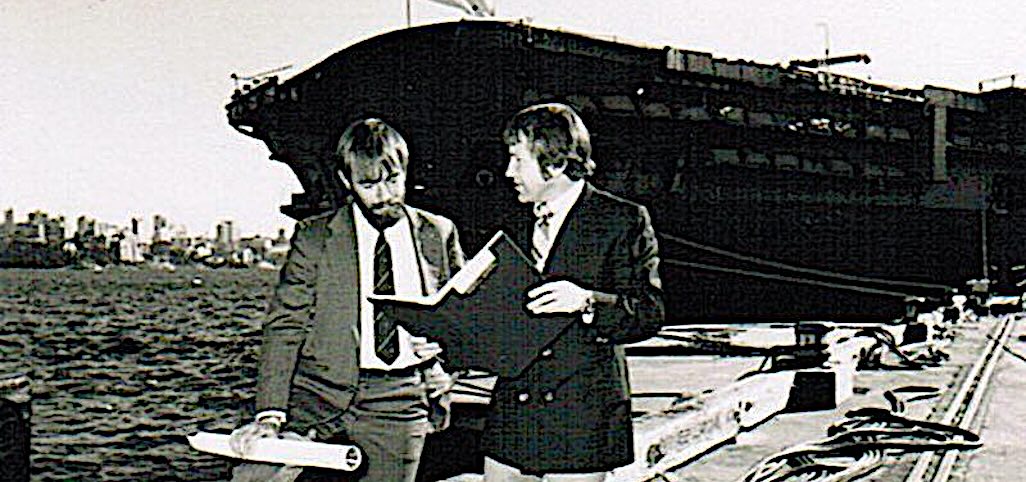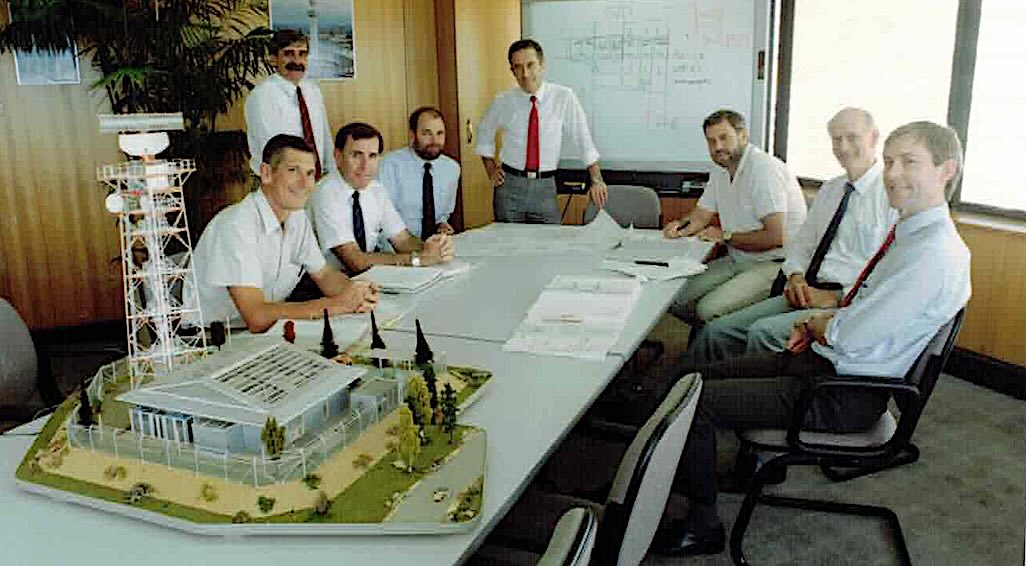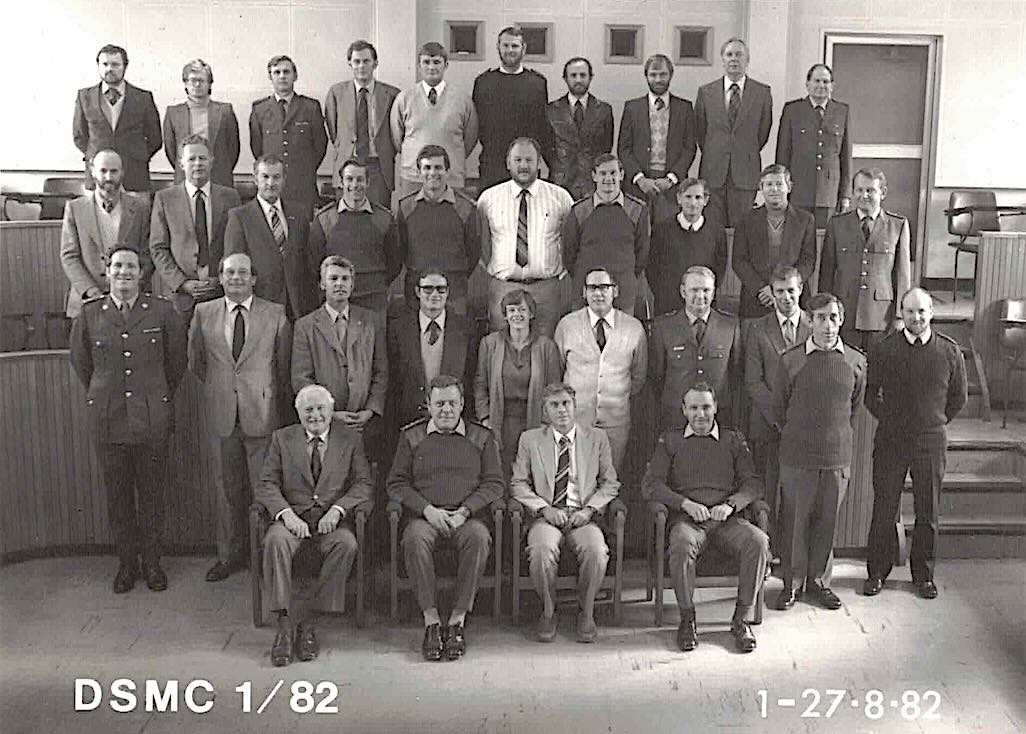Lloyd is the founder of TechInvestment.com, an AUD 23 million Australian company which invests its own funds in NASDAQ, NYSE and ASX listed technology companies with a focus on quantum computing (QC), advanced chips (GPU stacks), artificial intelligence (AI), and companies involved in high presence advanced tech consumer products and services.
Lloyd is also a Limited Partner in the Sydney Angels Sidecar Fund, an AUD 10 million Early Stage Venture Capital Limited Partnership (ESVCLP). The SASF is managed by Artesian.
Lloyd Bunting began his career learning to fly in the RAAF. But as a teenager he enjoyed the flying part of the job (especially solo aerobatics) more than officer training. As a result Lloyd spent the rest of his National Service at the back of RAAF C-130 and DHC-4 aircraft as an air dispatcher and parachutist in 1 Army Air Supply Organisation (1AASO) (176 Air Dispatch Squadron now part of the 9th Force Support Battalion (9FSB)).

🔺 Basic Flying Training School (1BFTS) Point Cook 1966-1967. One of 62 Winjeels: 12 (20%) crashed 🔺
✈ Lloyd's flying instructor Flt Lt Bill Clarke and Army trainee pilot 2Lt James Mayhew were killed at Port Arlington in 1968 when low flying in strong wind conditions. The starboard wing failed under an estimated +10G loading, either due to the severe turbulence from strong winds at low level or the result of a low level rolling pullup that exceeded the aircraft's structural G limits. The aircraft was 12 years old. The maximum G loadings for a Winjeel are +5.0 to -2.4. The maximum G loading for an F-16 or F-15E jet fighter at sea level is +9, and the pilots for those aircraft wear a G-suit.

🔺 CDC 3200 computer operator panel (all octal-binary)
🤔 Lloyd has been in information technology since 1970 (54 years ago) - the early days of electronic computing in Australia (CDC3200: 8-bit CPU with 4-wire iron core memory array - machine (MSOS), assembler (COMPASS) and compiler languages: FORTRAN and COBOL).
Lloyd earned his Diploma in Computer Programming Technology at the Control Data Institute, established by Control Data Corporation, a leading supercomputer manufacturer, to increase the availability of technically capable system developers. In 1988 the Institute was acquired by Computer Power Group.
The CDC 3200 was used by the US government (eg IRS), defense (eg Vandenberg ICBM launch control) and universities. It was also used by Canada's Defence Research Communications Establishment, Ottawa.
At that time Lloyd was also programming IBM System/360, a (hexadecimal) commercial mainframe.
🤔 Lloyd's machine language experience was applied to the first microcomputers (Zilog Z80 in the Cromemco Z-1, Intel 8080, and Motorola 6502 in the Apple II). In addition to maths and administrative applications, Lloyd built some interactive computer games for technology demonstration purposes to RAAF and Navy officers (eg at the RAN Staff College).
🤔 As more languages became available, Lloyd was programming in BASIC and FORTRAN in Hewlett Packard and Prime minicomputers, service bureaus, NSWIT/UTS ICL 1904 mainframe to statistical and modeling products and the internet. At that time BASIC had no apparent limit on the number of dimensions in an array, which was great for his development of Mathematrix (academic use only: eg transport model optimization).
In the private sector Lloyd has worked on major high technology projects for Defence, government, aviation and the banking sector.
🤔 While in the Office of the Public Service Board, Lloyd was asked by the Deputy Chief of Naval Staff (RADM Neil Ralph) to participate in a study led by an external consultant and CDRE Mal Savage with other senior naval officers, of Navy Office's capability to support the simultaneous introduction into service of new destroyers and Oberon Class submarines. DCNS' concern is relevant to the proposed acquisition of different types of submarine under the AUKUS Alliance.
🤔 Other projects conducted while in the PSB included:
🤔 While working in Defence, Lloyd developed the application of Monte Carlo simulation for risk identification, assessment and management of multiple potential critical paths in major defence acquisition project networks (with CMDR John P. Jenner [Seahawk pilot, and the Navy's first Director of Naval Integrated Logistic Systems Management] and WGCDR Terry O'Brien). Prime Computer provided their Canberra laboratory and Execucom provided their IFPS software. The MCPM demonstration project was the construction of a fleet of mine hunters.
✅ Lloyd, John and Terry presented MCPM to RADM Barrie West (Chief of Naval Materiel) and his project managers, and also to a large MTE public seminar in Sydney.
✅ MCPM simulation was supported in a 1986 report: Joint Committee of Public Accounts (JCPA) Review of Defence Project Management (243) - Recommendations 15 and 16 (paragraphs 4.21-4.23). The recommendation was accepted by Defence.
✅ MCPM is now incorporated into some advanced project management systems and is recommended by the Project Management Institute [📰 PMI Article: 2001].
😇 Acknowledgement: "The application of Monte Carlo simulation to risk analysis in project networks was developed by David G. Malcolm and his colleagues. This method, often associated with the Program Evaluation and Review Technique (PERT), was introduced in the late 1950s. Malcolm, along with John W. Roseboom, Charles E. Clark, and William Fazar, published their seminal work on this topic in the early 1960s" [ChatGPT].
Lloyd comments: We developed a network dependence coding structure and demonstrated the use of computer simulation for running large numbers of iterations on each activity in a large, complex project network. Our work identified all potential critical paths and assessed their probability of determining which were most likely to represent the ultimate critical path.
⚙️ Issue: Simulation, machine learning and artificial intelligence require a lot of processor power. Fortunately quantum computing and GPU chips are now capable of supporting that demand. Techinvestment.com is an investor in both quantum computing and Nvidia GPUs.
🤔 In the Australian Federal government's Office of the Public Service Board Lloyd worked in areas of performance improvement for government departments and programs, strategy development and implementation (machinery of government), and service-wide implementation of IT strategic planning and program performance improvement.
🤔 In the Federal Department of Finance Lloyd worked on service-wide implementation of program budgeting (recommended in the 1976 Report of the Royal Commission on Australian Government Administration).

🔺 Work Study and Systems Design: Garden Island Dockyard, Sydney. The ship is HMAS Sydney (former aircraft carrier)
Australian Army: 1 Army Air Supply Organisation (1AASO): Air Dispatcher, 🪂 Parachutist (36 AD PL: now 176 AD PL, a sub unit of 9th Force Support Battalion).
Department of the Navy and Defence: Cost Accountant, Finance and Planning Division, Garden Island Dockyard (Sydney Harbor). As the Dockyard's cost accountant, Lloyd established the costs for all dockyard work and services which were applied to all dockyard work orders, for reporting to Navy Office and cost recovery from US Navy and civilian ships using the dockyard during the Vietnam war. The work was supported by a primitive but effective costing system (DYCOST) with data sent to Canberra as punched tape for processing on Honeywell H800 mainframes and hard copy reports sent back every week. Lloyd also monitored dockyard statistics including wages staff levels and the cost of disastrous levels of industrial demarcation disputes and stoppages during the Whitlam years - the loss of work and income during stoppages caused many wages staff to leave, and dockyard production capacity crashed.
Department of the Navy and Defence: Work Study and Systems Design: Commissioned reviews of issues in civilian support to the Navy, including Navy Supply Depots, RAN Torpedo and Maintenance Establishment (RANTME), and RAN Missile Maintenance Establishment (RANMME).
Department of Administrative Services: May 1978 - Oct 1980: State Branch Accountant, Transport and Storage Division. Lloyd realised that his work to this point had no front-line experience in operational management. So this job filled that gap, with operational experience in "corporate" management, with secondments as manager of government passenger transport and manager of heavy transport (including dispute negotiation with unions).
Department of Defence: May 1980 - Dec 1982: Continuing projects - mainly opportunities for productive use of IT within Defence, Navy and RAAF. During this period the Air Officer Commanding arranged for Lloyd to be escorted around operational bases by a Red Flag (USAF equivalent of Top Gun) fighter pilot - a real honour for a guy who wanted to be a fighter pilot.
Office of the Public Service Board: Jan 1983 - Jul 1987: Service-wide, departmental, program and strategic projects and assignments. The PSB was closed around 1987.
Australian Parliamentary Service: Presiding Officers' Coordination and Planning Advisory Group [page 3]: Advisor to the President of the Senate, Speaker of the House of Representatives and Parliamentary Departments.
Department of Finance: Jun 1987 - Jul 1989: Principal Finance Officer.
Department of Defence: Inspector-General's Office: Projects.

🔺 Radar Sensor Procurement Project management team. The model is of a PSR+SSR radar station
Civil Aviation Authority (now AirServices Australia) Cost/schedule control for the Radar Sensor Procurement Project (RASPP: 26 enroute and major airport sites around Australia).
Telstra/Marconi tender for the $1 billion Jindalee Over the Horizon Radar Network project. Lloyd's contribution to the Telstra/Marconi bid was project risk management (using Lockheed Missiles and Space methodology) - earning top score in this area of the tender evaluation.
Defence Supply Systems Redevelopment [SDSS] project: Business case specialist in the prime systems integration team. Lloyd's work included building a capacity planning model to determine sizing and costs of all viable alternative network design configurations for Defence supply management and all ADF supply depots.
Lloyd joined ANZ Bank as a Senior Manager, promoted Chief Manager, in capital expenditure (strategy implementation, systems development, acquisitions, property and equipment leases etc). Reporting directly to the Group Chief Financial Officer/Board Secretary: Lloyd provided independent advice to the Executive Committee and Board on approval and performance of about 500 major (>$1m) capital expenditure projects in Australia and globally.
But after 5 years as a senior corporate executive he went back to project work with a major US technology company: EDS [Electronic Data Systems]: Aug 1998 - Mar 2001. EDS failed during the dot-com crash of 2000-2001.
There comes a time for building and running a business rather than continuing a life of contracting or employment in someone else's business. For some time Lloyd had been a contractor specialising in project management followed by 5 years as a senior executive at ANZ Bank, and then more contract work on a Customs project.
In 2005 Lloyd decided to built two businesses - both successful:
In 2010 Lloyd gave eGrants to his business partner in order to focus on Techinvestment.

🔺 eGrants.com design, development, maintenance and operation
In 2005 Lloyd founded a successful Software as a Service (SaaS) company (eGrants.com/eGov.com.au). eGrants supported programs distributing about $1 billion in funds to state and local governments and other entities, with "clean" assessments from the ANAO. At the time there were no government security standards for SaaS, so our system was certified against PCI/DSS and audited for exposures and new threats daily by Symantec. Symantec's MSSP team would daily search for weaknesses in eGrants security, and would require any weakness to be fixed within 72 hours.
✅ eGrants.com achieved a 99.5% user compliance rate and a 95% satisfied or very satisfied rating by users, and the grant program (our client) received a Minister's achievement award. eGrants.com was also used to accelerate the investment of grant funding into local government infrastructure projects at the depth of the Global Financial Crisis. Every schedule target was met: "if it's not impossible we're not being ambitious enough". This contract was a first for us (as eGov: our first $1 million contract) and the government (its first SaaS contract).
TechInvestment.com manages a portfolio of technology stocks (mainly quantum computing and artificial intelligence) listed on NASDAQ, NYSE and ASX exchanges. It does not provide investment services or advice.

🔺 The first Defence Systems Management Course: Run by DSTO for Lieutenant Colonel and Colonel equivalent officers. The course was about development of defence strategy and capability requirements amongst other issues.
RAAF: 1 Basic Flying Training School (1BFTS): 64 Pilots Course (age 19) 1966-1967.
Australian Army: Air Dispatch, Parachute Training (DHC-4 Caribou, C-130 Hercules) 1969: Great fun, especially a mass drop, when the sky is full of parachutes - above, below, and in between.
Control Data Institute: Computer Programming Diploma 1970-1971
University of Technology Sydney (NSWIT):